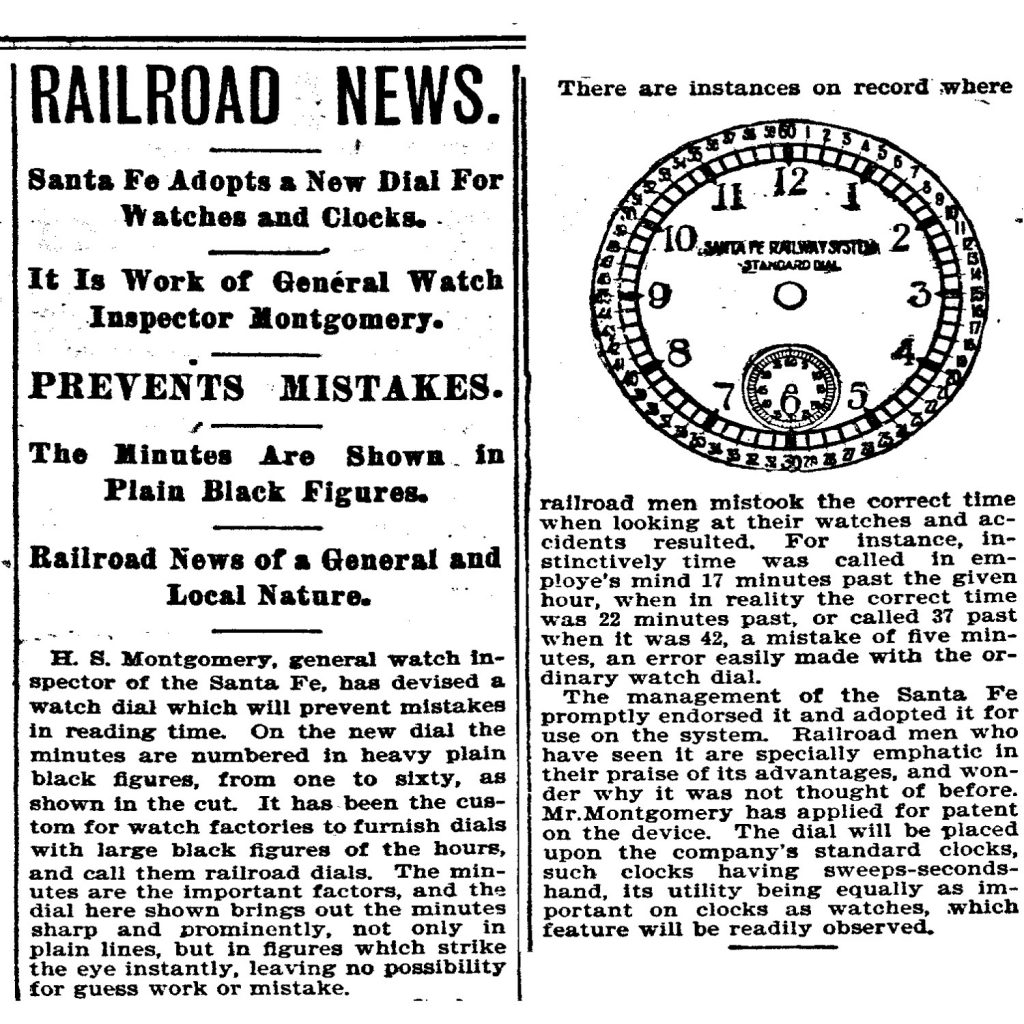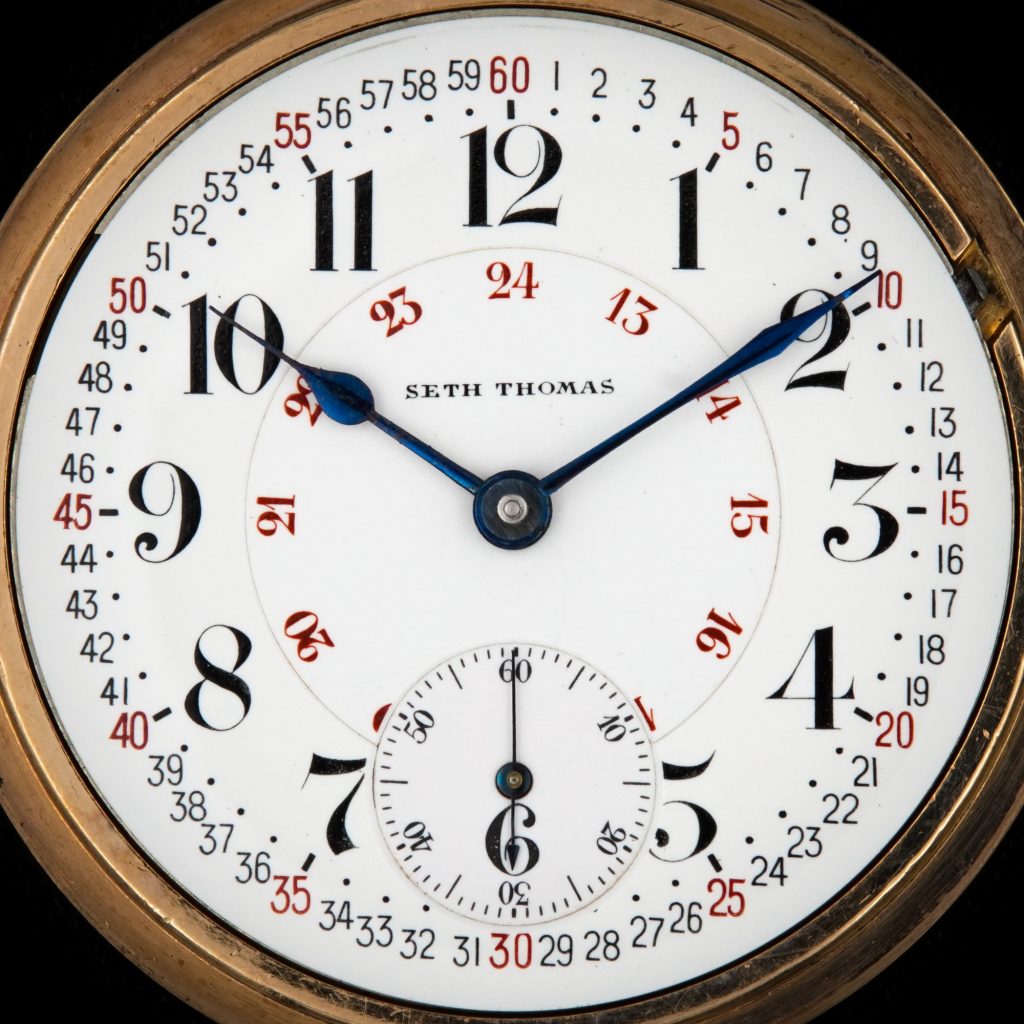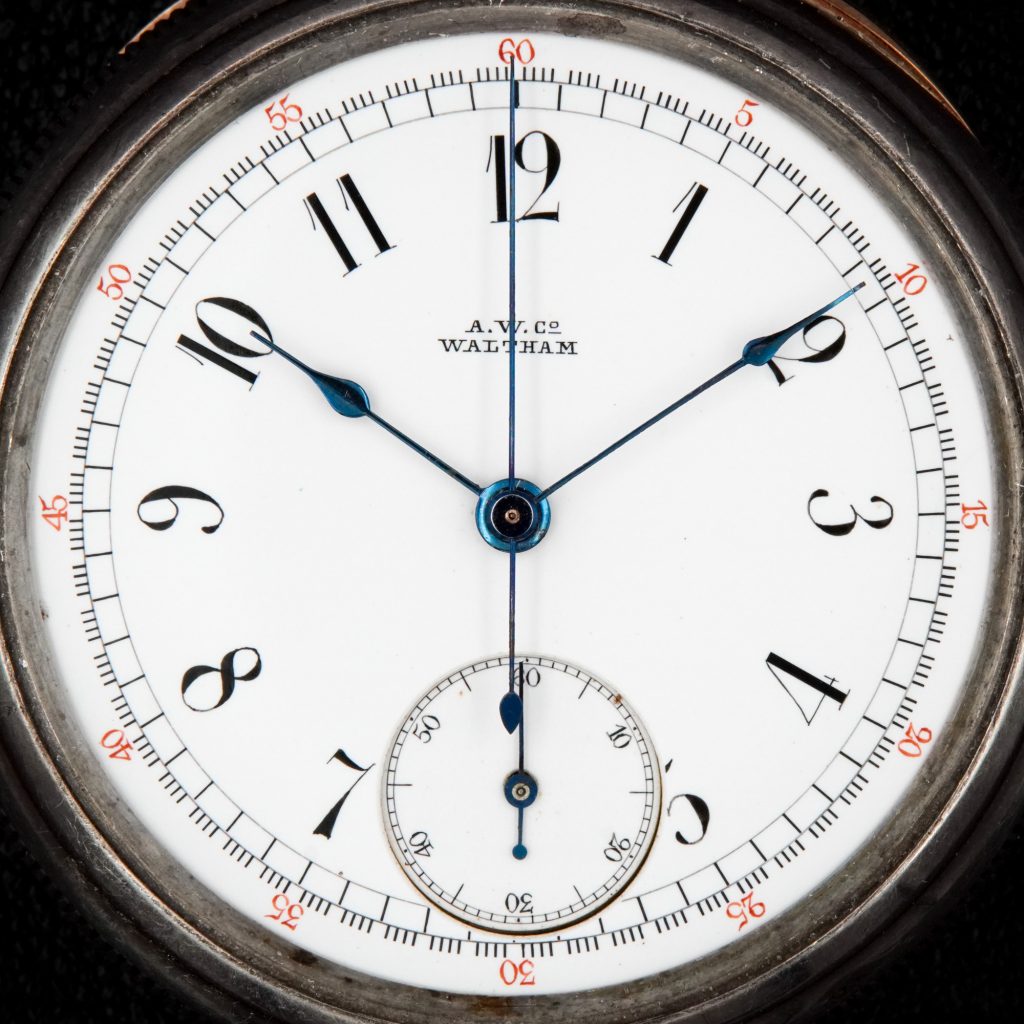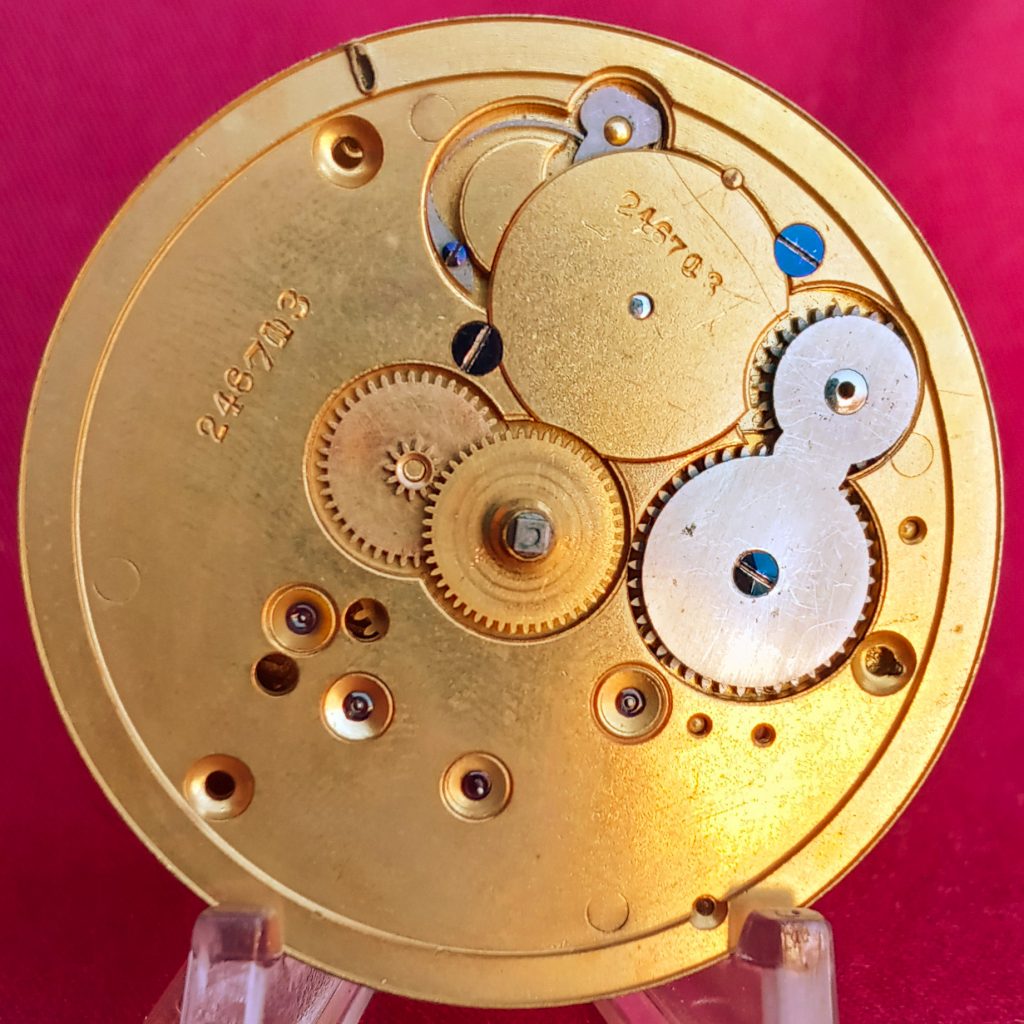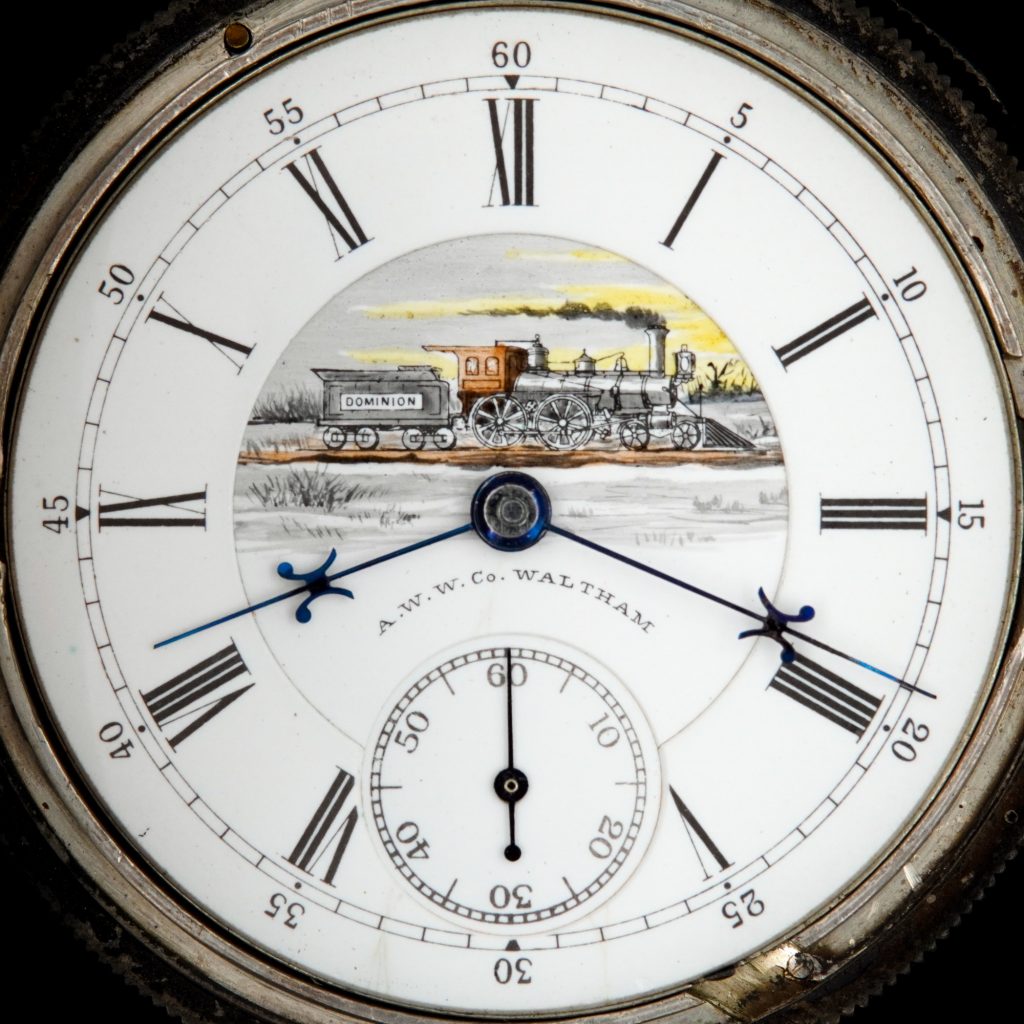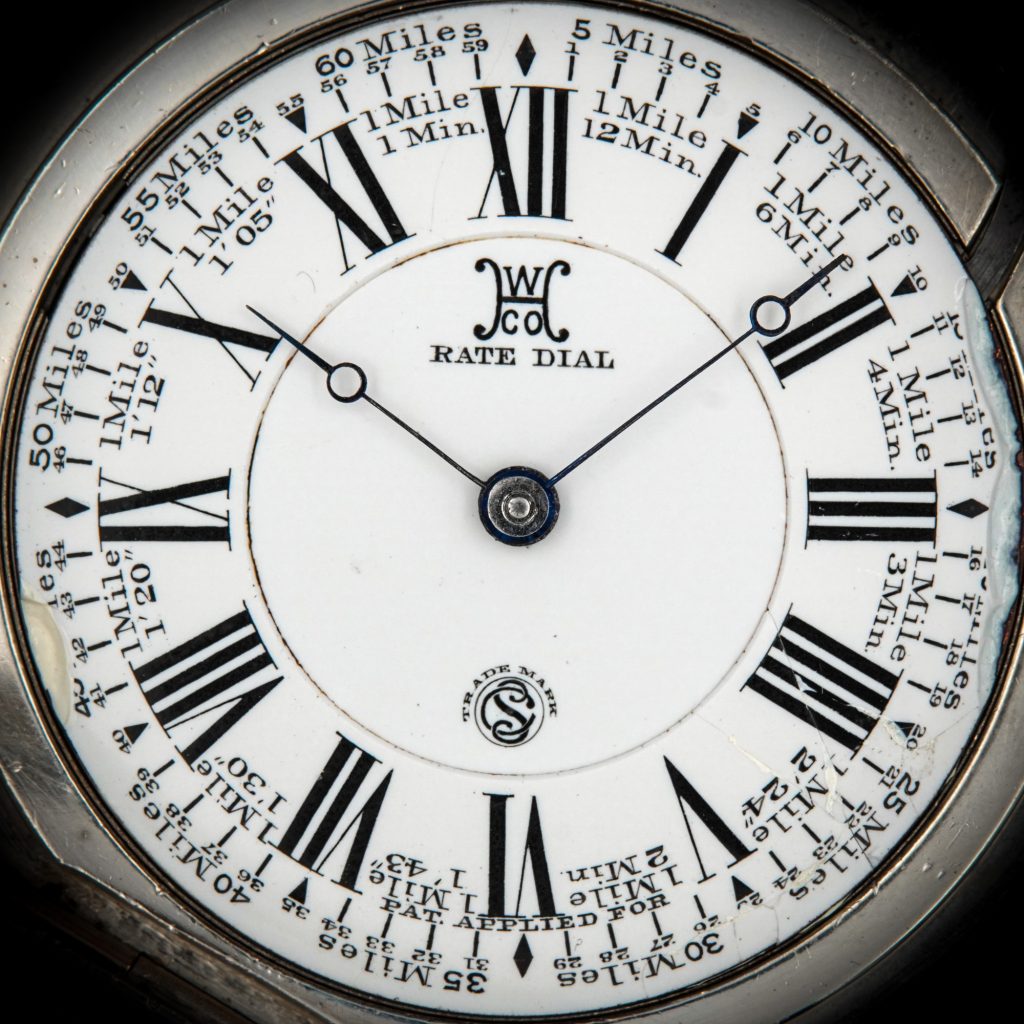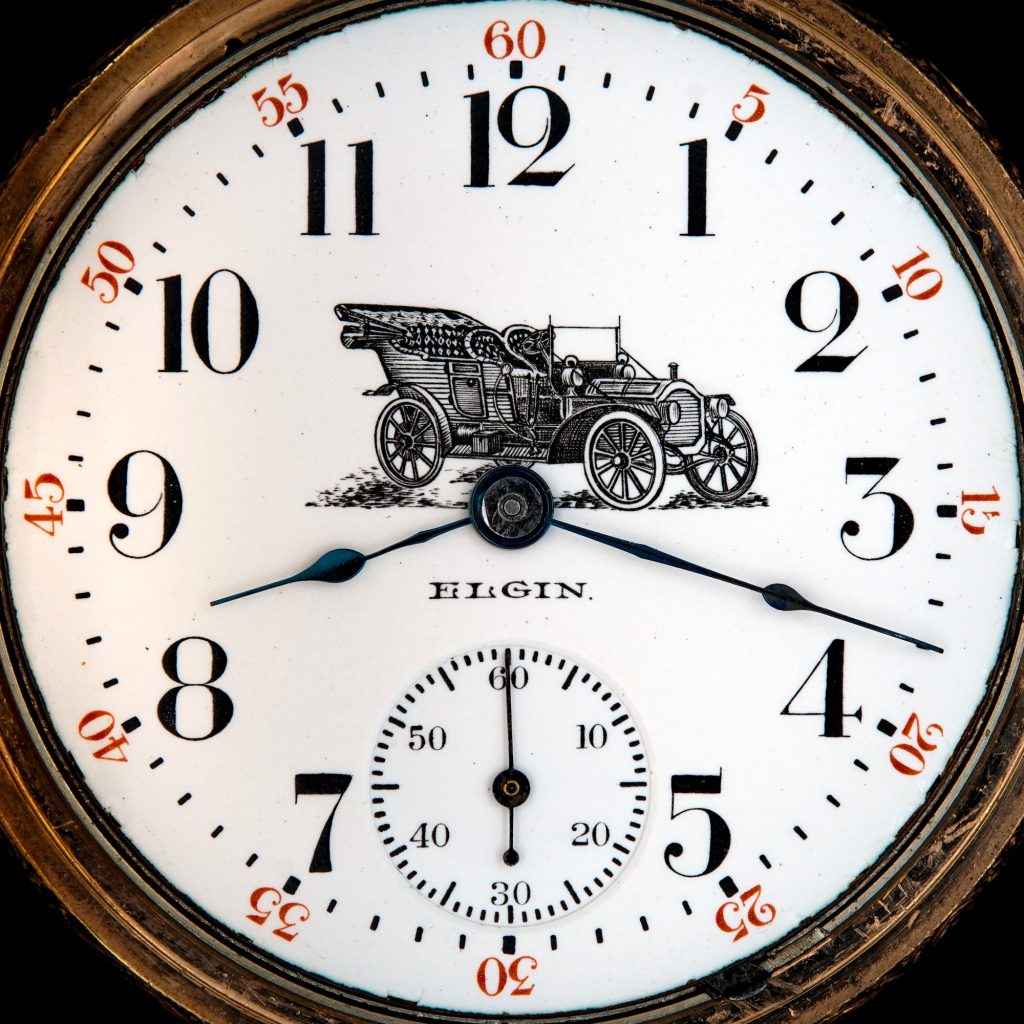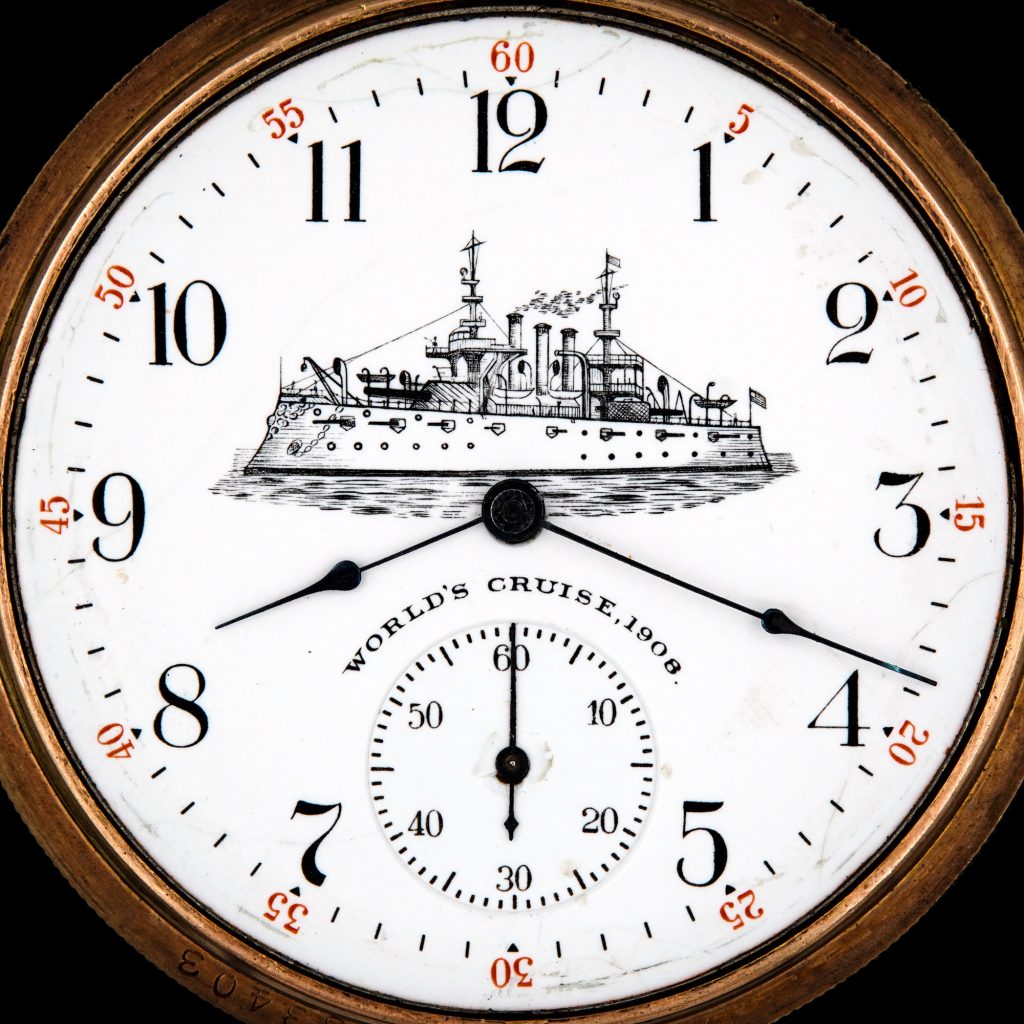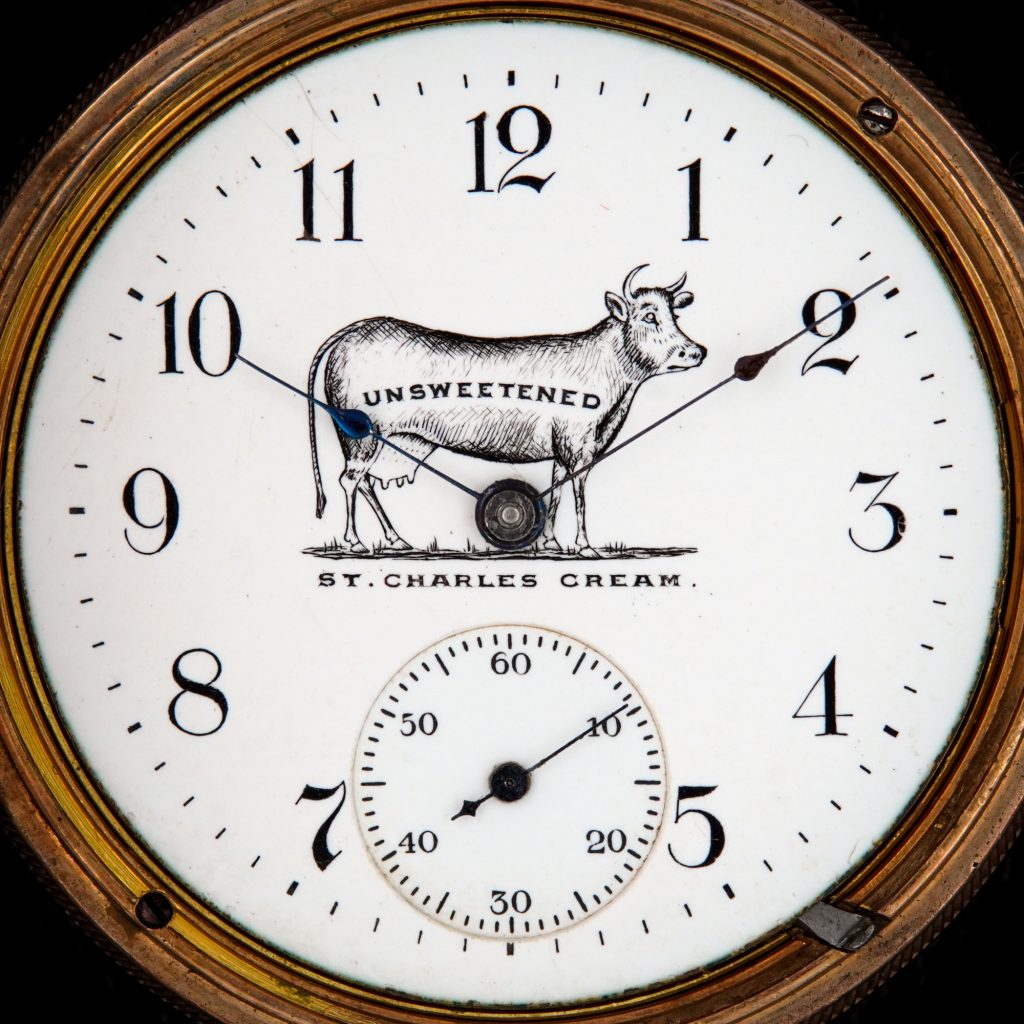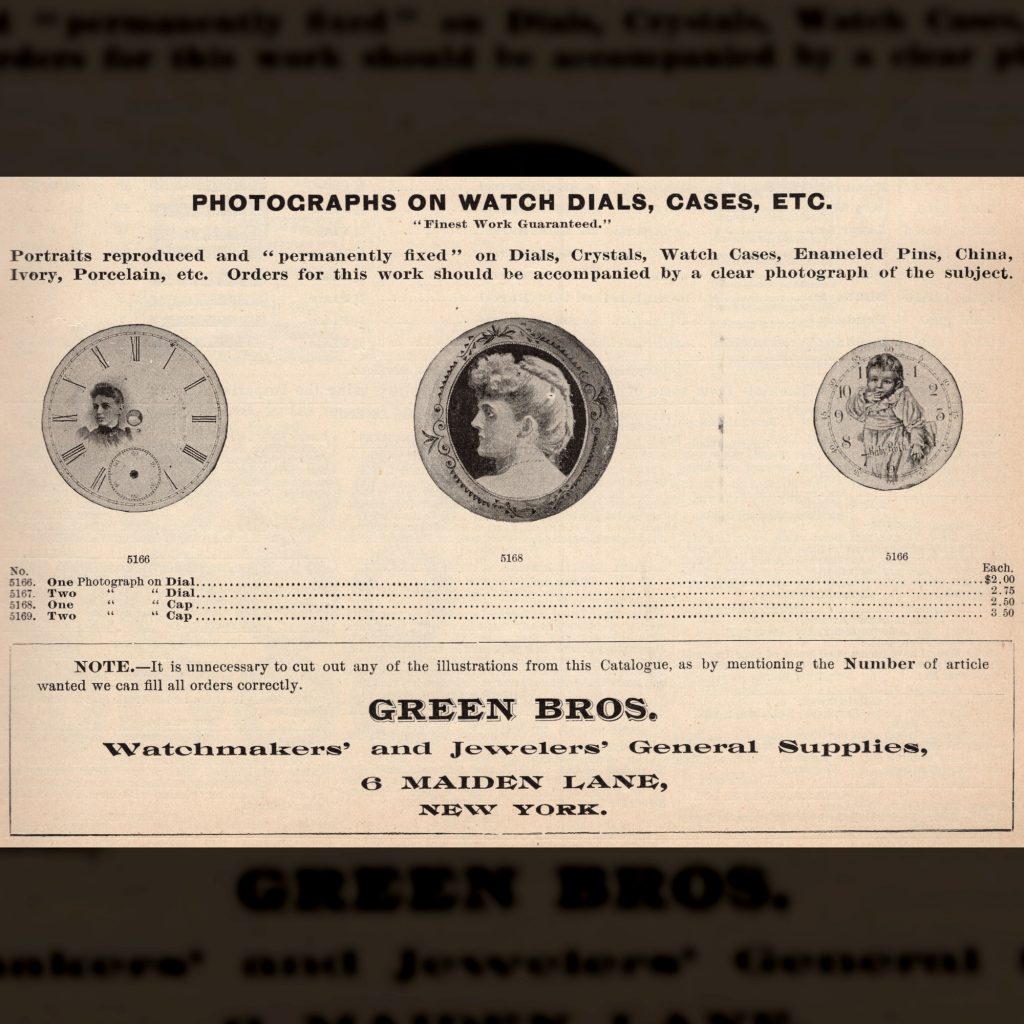History
Pictured: Seth Thomas “Montgomery Dial” with Continuous Marginal Minute Figures, Fitted on an 18-Size “Railway” Movement. As the five-minute marginal figures became popular on American watch dials in the 1890s,.
Pictured: Hand-Painted Chronograph Dial with Red Marginal Five-Minute Figures, Fitted on a Waltham 14-Size Riverside Chronograph, c.1882. The familiar five-minute marginal track featured on a variety of American watch dials.
Hand-Colored “Dominion” Locomotive Dial, Winter Scene, Fitted on a Waltham 18-Size Crescent St. Movement. Shortly after the American watch factories perfected new procedures for efficiently marking dials with transfer techniques,.
New image transfer techniques at the end of the 19th century also yielded innovative and practical dial designs. The “Rate Dial” Designed to Indicate Speed of Travel, c.1895, Fitted on.
Pictured: c.1909 Watch Dial Commemorating The 1908 World’s Cruise, Depicting the USS Connecticut Battleship, Fitted on an Elgin Grade 291 Movement. Using newly-developed image transfer techniques, illustrative dials were also.
Pictured: c.1900 St. Charles Unsweetened Cream Watch Dial, Fitted on Elgin 6-Size Grade 95 Movement. The advancement of transfer techniques for marking dials in the late 19th century provided new.

